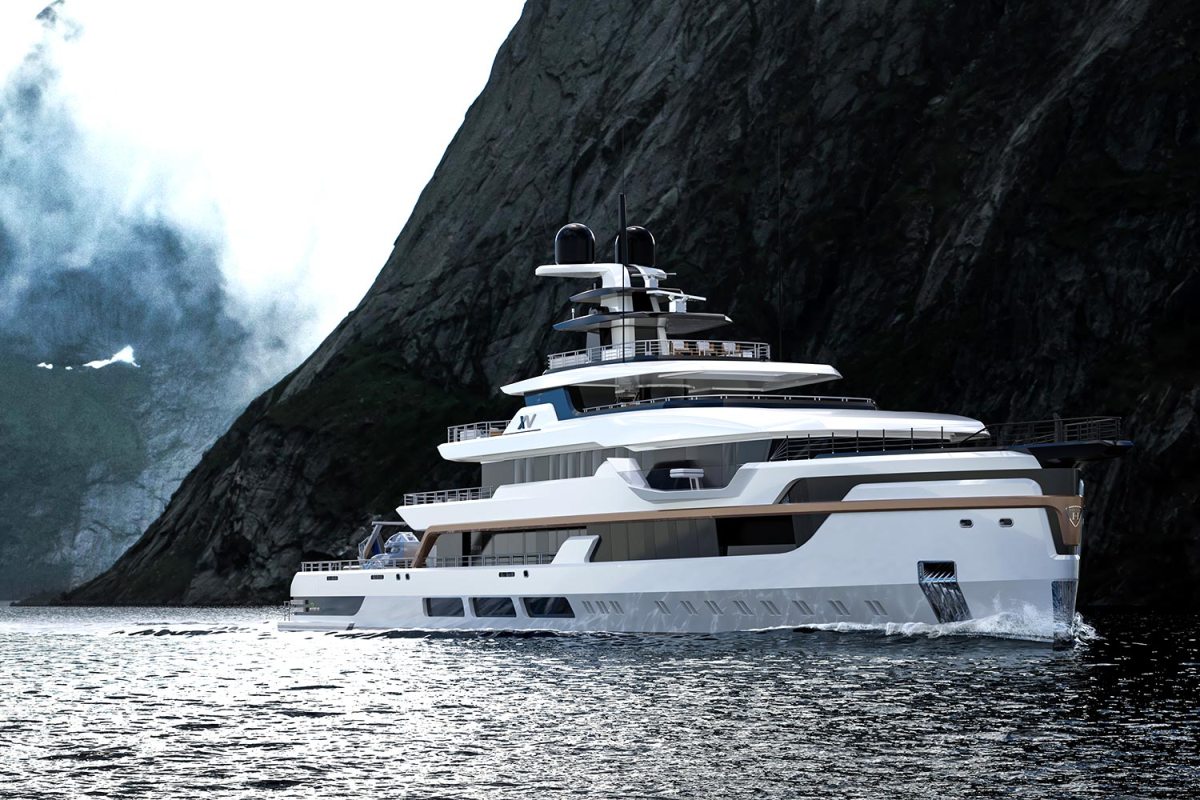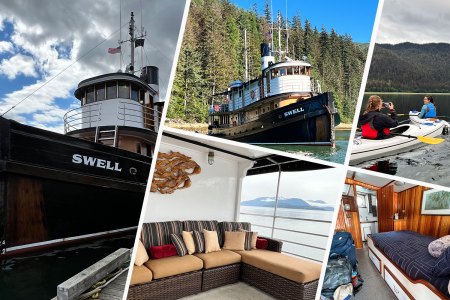Arthur Brouwer says that, these days, his products are so much more than just boys’ toys — even very rich boys’ toys. “It’s a very non-woke thing to say, but the truth is, yes, most of our customers are men,” laughs the CEO of Heesen, arguably the world’s most advanced superyacht builder, headquartered in the Netherlands. “But the fact is that more and more women are buying yachts like these now, as there’s a greater spread of wealth, and they want much the same thing.”
For some of them it’s a reflection of their love of the sea. “It’s all ‘I grew up around boats.’ Their passion is enjoying themselves on the water in the same way that other people enjoy driving cars,” says Brouwer, although perhaps it’s hard to square hauling sails against the sting of seawater with the kind of fully-staffed floating mansion of over 130 feet that Heesen typically builds.
For a lot of his other customers, he says, these yachts are more the ultimate expression of privacy and safety: self-sufficient, mobile private islands, away from prying eyes or, perhaps, the end of the world. Although business inevitably slumped during the pandemic, it has since rebounded significantly, with Heesen’s customers now more family-oriented.
“They want [a yacht] to escape. They want to know how we can make a yacht safe for their children, or for their dogs,” Brouwer notes. “Family needs have replaced concerns clients might have had a few years ago about, say, changing the color.”

It’s not just the pandemic that has brought a shake-up for the handful of yacht-builders around the world of Heesen’s capabilities and price range, which is anywhere from $5 million to $55 million. Almost a quarter of all superyachts are American-owned — dwarfing all other nationalities — but the Russian invasion of Ukraine saw the Dutch government, in February of last year, block 14 Russian-owned yachts from leaving the country, including 12 then still under construction at five shipyards.
Things may have looked particularly tricky for Heesen seeing as it was owned, at a distance, by the Russian oil and gas mogul Vagit Alekperov. He was largely unsanctioned by Western nations, but, all the same, Heesen ownership has since been transferred to a Dutch foundation, making the company fully Dutch again.
That’s a fitting move this year, not least because it bolsters the Netherlands’ heritage in this most rarefied of transport sectors (the world’s top three or four yacht-builders are all Dutch), but also because this year marks the company’s 45th anniversary; it was founded by Frans Heesen in 1978, when he bought a small builder and transformed it, giving it market distinction through a focus on applying the very latest tech.
Some of Heesen’s more famous builds — the likes of the 180-foot Serenity, 213-foot Galactica Star and 230-foot Galactica Super Nova — embody the science that has allowed the company to, as it were, make a splash. Heesen has a world-leading reputation for a patented, super-stable aluminum construction, one which makes, for example, the whopping 262-feet Galactica, currently under construction, 150 tons lighter than if it had been built using more traditional steel. “And if you want a steel yacht, which we can still provide, we can still use all that different understanding we have of building lighter to create something that’s more agile [than steel craft from other builders],” Brouwer reckons.

Then there is Heesen’s hull technology. Its own low-drag Fast Displacement Hull Forms, co-developed with Van Oossanen Naval Architects, are said to reduce fuel consumption by 30% and give greater speeds. “It’s the same with cars: if you have a low Cw number [the drag coefficient], then you go faster, only with us we’re in the water,” Brouwer explains. “And when you’re lighter too, because of that aluminum, what you end up with is a sleeker, more slippery hull. Result? You go quick.”
Heesen was a pioneer when it built the first superyacht with hybrid diesel-electric power back in 2017 too, and plans to be ahead of the curb as the likes of hydrogen and e-fuels come into play, more towards 2030 they estimate. Efforts towards sustainability — which, Brouwer concedes, the superyacht business was slow to embrace, though changes in national rules are somewhat forcing progress now — even include sourcing a techy alternative for teak, the traditional, smooth, cool, water-resistant but sadly not so sustainable choice of material for yacht decking. Heesen has even studied the possibility of using the wonder material graphene in its builds, but, for the time being at least, it would triple or quadruple costs relative to aluminum.
Exploring the Alaskan Wilderness From the Deck of a Luxurious…Tugboat?
The Alaskan cruise you didn’t know you needed“Customers want the newest technology because, remember, quite a few of them are entrepreneurs — they like the latest developments and applications. They like to be at the forefront, not buying a boat with tech that was available 15 years ago,” says Brouwer. “It was us who used to have to bring the subject [of the environmental impact of superyachts] up with customers, often to be met with a lot of skepticism, now we get far more questions from them about it.”
Last year he put Heesen on a more official sustainability footing with the launch of its BlueNautech program, which aims to take a more holistic approach, covering everything from a yacht’s waste management system through to its energy consumption while at anchor. Remarkably, most superyachts spend 90% of their life at standstill.
“Customers also have good financial advice,” he adds. “They also know that it’s likely to be the most expensive single asset they have, and they want it to be future-proof.”

But the company has also made some smart business, as well as engineering, moves: Rather than waiting for an order and the complex financing that can go with it, Heesen puts its own money into building “series” yachts of its own design in the hope that they will sell. That’s a gamble; it means taking customers along with their new ideas. But it also means that someone who really wants their superyacht sooner rather than later — and the very well-heeled are not always patient — can have one from Heesen in, say, a one- or two-year timeframe rather than three years or more.
“That’s been a very successful model for us, and it’s the kind of thing you can only do if you have the financial depth, the knowledge and the build team to make it happen,” explains Brouwer. “It means we pick up one to two clients per year we might not otherwise get. That doesn’t sound like a lot, but we only build four superyachts a year. That matters too when, in the short term at least, the biggest challenge we face is hardcore factory stuff — supply chains, labor costs, a skilled workforce and so on.
“There’s this belief that you can make an easy buck [with superyacht-building], but actually it’s the quality of the crafts required and expected that means there’s less new competition out there,” he adds. “[At this level], it’s a stable market and you’d have to be crazy to go into it now, because while heritage is important, success comes down to the people — the designers, the builders — who you can’t just get off the shelf. You know, this is a very costly product, but we’re really like a super cottage industry. We don’t have the capacity to build more. What we can do is build a little bit bigger, a little bit more luxury, a little bit more clever.”
This article was featured in the InsideHook newsletter. Sign up now.
























